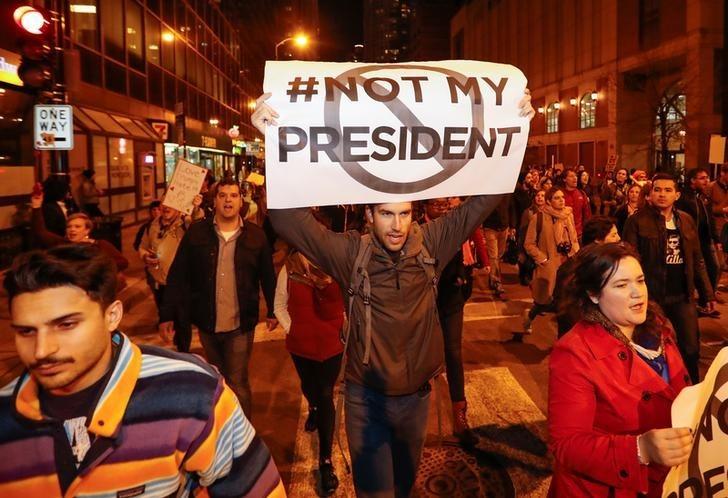Society’s polarization helps explain state of US politics
https://arab.news/v62ne

Since at least the 2016 election, many Americans have been asking how the country came to feel so deeply divided. A new book provides compelling answers to that question, though little cause for optimism.
Ezra Klein, a well-known figure in US political journalism, seeks to understand fundamental US political changes in his new book, “Why We’re Polarized.” He reassures Americans who feel that their country has become increasingly divided that they are correct. “There is less ideological overlap, fewer of us are caught in the middle, and there is more tension between the poles,” he writes.
The crux of Klein’s narrative is the idea that various identities have merged with political identities — essentially, Republican or Democrat, conservative or liberal — to create “mega-identities,” around which society and politics are clustering.
He says that this is new: A perhaps darkly reassuring argument for those who wondered if their sense of trouble in American democracy was real or just a case of recency bias. Klein argues that, in the first part of the 20th century, the Republican and Democratic parties were much less organized around ideology. The Democratic Party was an alliance of Democrats who promoted ideas such as “New Deal” policies and Dixiecrats whose interest was in maintaining Democratic and white dominance in the American South. That alliance broke with the 1964 Civil Rights Act, which the Dixiecrats vehemently opposed. Over several years, white southerners who worried about race largely shifted to the Republican Party, while black voters moved to the Democratic Party. This was the start of a broader transformation in the parties.
When the Civil Rights Act was passed, the parties were demographically similar and mostly white; today, they are clearly different. In 2012, 43 percent of self-identified Democrats were nonwhite, compared to only 9 percent of Republicans. These racial and ethnic differences have played significant roles in shaping the parties’ interests.
The parties also sorted in other ways. According to a 2017 Pew Research Center poll, both parties remain majority Christian, but religiously “unaffiliated” Americans compose 33 percent of Democrats and Democratic-leaning voters, but only 11 percent of Republican and Republican-leaning voters. Republicans and Democrats are increasingly sorted by geography too, with very strong trends of Democrats leading in urban areas and Republicans in rural areas — a shift with significant implications for the Electoral College that determines presidential elections. Beyond these demographic metrics, Klein demonstrates that Republicans and Democrats are increasingly sorted by personality type and lifestyle preferences.
In the past, these differences existed but were much more cross-cutting, while today they increasingly align with political party and ideological identities. One essential factor that is helping to drive this process — “the core cleavage of our politics,” according to Klein — is the fast pace of demographic change. The US Census Bureau has projected that, by 2044, non-Hispanic whites may no longer constitute a majority of the population. Although non-Hispanic whites would remain a plurality, this type of change is deeply concerning to many white Americans. Furthermore, as Klein notes, sometime during Barack Obama’s presidency, the country’s population shifted from a majority that was both white and Christian to less than 50 percent.
In his presidential campaign, Donald Trump tapped into the concerns that many white Americans have about these changes. Many of them feel that the US may no longer be the country they know and love; in other words, these demographic changes are perceived as posing a direct threat to their identity. In response, many nonwhite Americans see Trump as a direct threat to their own identity, while liberal white Americans see Trump’s vision of America as a direct threat to their own sense of what the US should be.
As Americans’ identities have consolidated around two poles, Klein points out that the country’s political institutions and actors have responded in ways that reinforce that polarization. Changes in the media landscape have incentivized media outlets to appeal to polarized groups, particularly to hook them with content that excites outrage. Political parties are incentivized to encourage anger toward the other party in order to motivate voters to vote for their candidates, donate money, and otherwise support the party.
Klein demonstrates that polarization in the US is playing out in ways that are deeply worrying. He draws on psychology studies to demonstrate the primacy of identity in human political activity and the fundamental human need to create “in-groups” and “out-groups” — and why it is incredibly difficult to pull out of a feedback cycle of polarization.
Political parties are incentivized to encourage anger toward the other party in order to motivate voters.
Kerry Boyd Anderson
While much is specific to the US political environment, Klein’s work has implications well beyond America. The UK, as it departs from the EU, is deeply divided and demographic change has played a key role there too. Countries from India to Brazil also appear to be undergoing their own polarization processes.
Klein is clearly reluctant to move into the “recommendations” phase of his book. He thinks that it is probably not possible to reverse polarization, though he offers some ideas to improve the resilience of the US political system. He offers two suggestions that are useful beyond the US context. One is “identity mindfulness” — being aware of our identities, how they shape our behavior, and how others manipulate them. The second is to focus more on our local communities and ways that we can help to improve them. These suggestions may seem small but, if applied by many people, could have profound impacts.
- Kerry Boyd Anderson is a writer and political risk consultant with more than 16 years' experience as a professional analyst of international security issues and Middle East political and business risk. Her previous positions include deputy director for advisory with Oxford Analytica and managing editor of Arms Control Today. Twitter: @KBAresearch









































